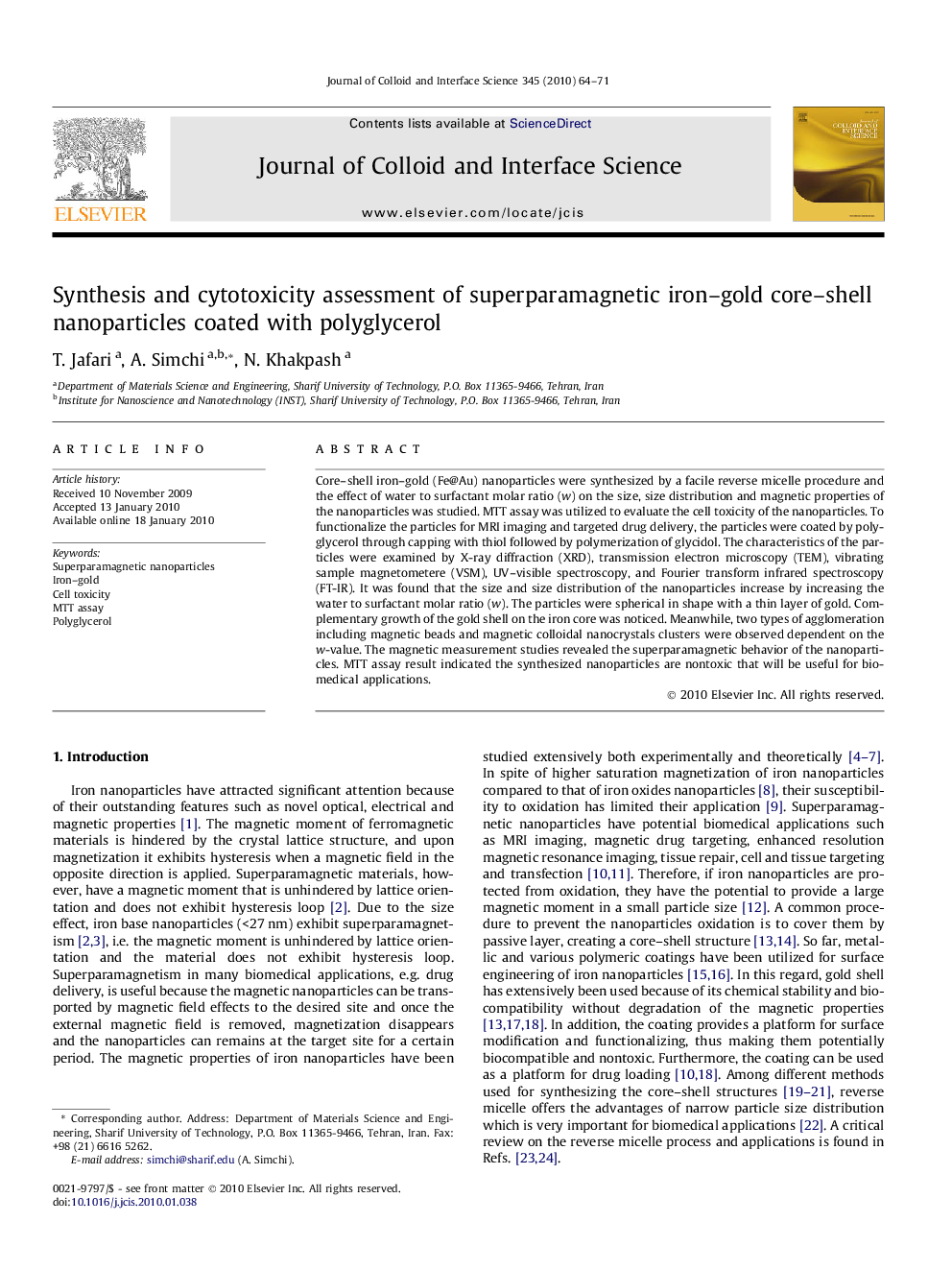| Article ID | Journal | Published Year | Pages | File Type |
|---|---|---|---|---|
| 610105 | Journal of Colloid and Interface Science | 2010 | 8 Pages |
Core–shell iron–gold (Fe@Au) nanoparticles were synthesized by a facile reverse micelle procedure and the effect of water to surfactant molar ratio (w) on the size, size distribution and magnetic properties of the nanoparticles was studied. MTT assay was utilized to evaluate the cell toxicity of the nanoparticles. To functionalize the particles for MRI imaging and targeted drug delivery, the particles were coated by polyglycerol through capping with thiol followed by polymerization of glycidol. The characteristics of the particles were examined by X-ray diffraction (XRD), transmission electron microscopy (TEM), vibrating sample magnetometere (VSM), UV–visible spectroscopy, and Fourier transform infrared spectroscopy (FT-IR). It was found that the size and size distribution of the nanoparticles increase by increasing the water to surfactant molar ratio (w). The particles were spherical in shape with a thin layer of gold. Complementary growth of the gold shell on the iron core was noticed. Meanwhile, two types of agglomeration including magnetic beads and magnetic colloidal nanocrystals clusters were observed dependent on the w-value. The magnetic measurement studies revealed the superparamagnetic behavior of the nanoparticles. MTT assay result indicated the synthesized nanoparticles are nontoxic that will be useful for biomedical applications.
Graphical abstractConceptual scheme for the synthesis of functionalized core–shell iron–gold nanoparticles and assessment of magnetic properties and cell toxicity.Figure optionsDownload full-size imageDownload high-quality image (56 K)Download as PowerPoint slide
